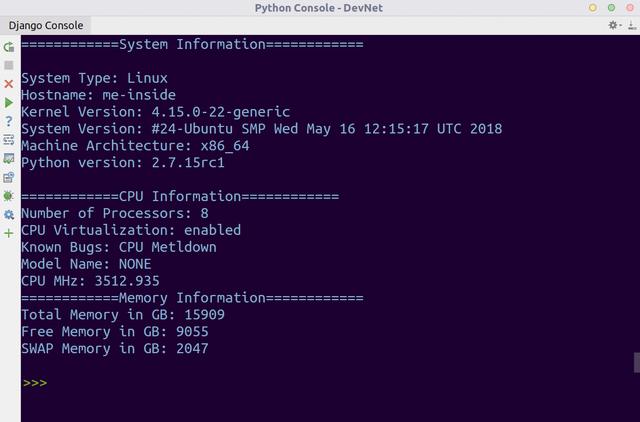

- #Python free memory how to
- #Python free memory code
Any local memory assignments such as variable initializations inside the particular functions are stored temporarily on the function call stack, where it is deleted once the function returns, and the call stack moves on to the next task. When a function is called, it is added onto the program’s call stack. It is the memory that is only needed inside a particular function or method call. The size of memory to be allocated is known to the compiler and whenever a function is called, its variables get memory allocated on the stack. We call it stack memory allocation because the allocation happens in the function call stack. The allocation happens on contiguous blocks of memory. The methods/method calls and the references are stored in stack memory and all the values objects are stored in a private heap. So now x refer to a new object x and the link between x and 10 disconnected but y still refer to 10. All of that makes Python a poor choice for use on small systems with limited RAM. It dynamically allocates memory, and takes care of cleaning up objects your program doesn't need anymore. Python is intended for use where you have memory and processor horsepower behind it. Output: x and y do not refer to the same object That said, I don't use Python in my microcontroller based projects.
Taking multiple inputs from user in Python. Python | Program to convert String to a List. isupper(), islower(), lower(), upper() in Python and their applications. Print lists in Python (5 Different Ways). Different ways to create Pandas Dataframe. Reading and Writing to text files in Python.  Python program to convert a list to string.
Python program to convert a list to string. #Python free memory how to
How to get column names in Pandas dataframe. Adding new column to existing DataFrame in Pandas. ISRO CS Syllabus for Scientist/Engineer Exam. ISRO CS Original Papers and Official Keys. GATE CS Original Papers and Official Keys. If currently, returned object count is greater, so there is a memory leak. Get the number of objects tracked currently and compare the valve with the previous value for the leaked objects. When the function is returned, all the created within the function should be deleted. Print the response status code, so that we can confirm that the object is created. Call the function that calls the request.get() method. You can use gc.get_objects() to get list of tracked objects then use len function to count no. Get and store the number of objects, tracked ( created and alive) by Collector. When the response object is non-referenced i.e deleted its memory should be freed immediately, but due to its implementation, the resource is not freed automatically. We will be using get() method in requests, that returns a response object. Some non-referenced objects are not immediately free automatically due to their implementation. collect(): This method free the non referenced object in the list that is maintained by the Collector. get_objects(): This method returns a list of all tracked objects by the Garbage collector, excluded the list being returned. Some gc methods that we will be using are listed below. Garbage collector manages the allocation and release of memory for an application. But high-level languages like python, java have a concept of automatic memory manager known as Garbage collector. #Python free memory code
In lower-level languages like C and C++, the programmer should manually free the resource that is unused i.e write code to manage the resource.








 0 kommentar(er)
0 kommentar(er)
